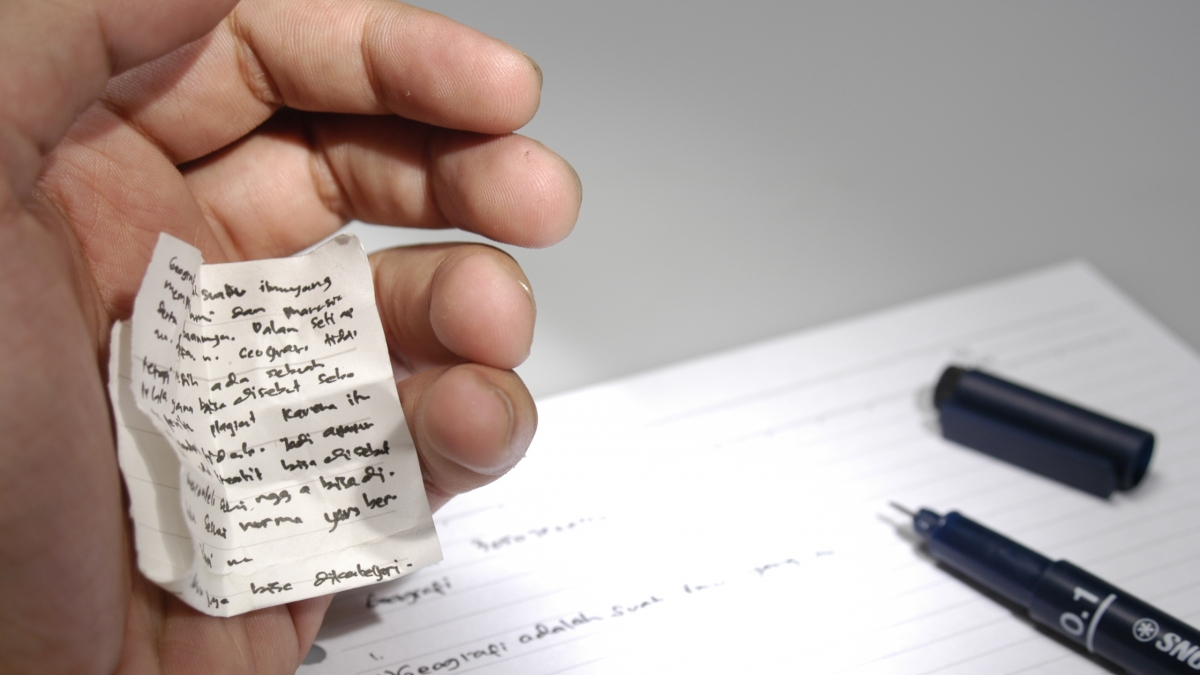
A Cheat Sheet for 7 Different Twitter Situations
Twitter is a great network to follow and connect with people who share common interests. But like other social networks, there are certain rules of etiquette to situations that may arise. If you're just getting started with Twitter and are unsure what your next steps are, check out this "cheat sheet" list to help you decide how to respond.
1. Should I Tweet or DM?
Trying to decide whether you should tweet to someone or send them a direct message (DM)? Keep in mind, DMs are also limited to 140 characters, just like a regular tweet. Direct messages are typically reserved for personal information. Tweets are usually available for anyone to see, unless your account is set to private. Choose to DM someone if you are asking them a personal question or are giving them personal information (email, phone number, address, etc.). Most everything else can be said through a tweet.
2. when someone follows me?
Unfortunately, there are spammers on Twitter so you don't want to blindly follow anyone who follows you. Check out the person's profile before you follow them. Make sure they are tweeting relevant information. If you like what you see on their profile, go ahead and follow them back. You might even tweet to them and say, "Thanks for the follow!", or something similar.
If you are not interested in this person's Twitter and choose not to follow them, simply remain cordial. You don't have to acknowledge everyone who follows you on Twitter, but you definitely don't want to make enemies.
Do not, I repeat, do not create a canned message system that direct messages people whenever they follow you saying, "Thanks for following, check out my website...". This approach is impersonal and rubs people the wrong way.
3. when someone is angry at me/my company?
Twitter is a quick way for people to voice their complaints, especially when it comes to businesses. If someone tweets about being upset or disappointed with something you or your company has done, focus on customer service. Do not start an all out social media war. Be gracious and willing to squash the issue as quickly as possible. Let the person know you have heard their complaints and want to do everything you can to help them out. Most of the time it's important for the person that their issue is at least acknowledged.
4. when someone @mentions or retweets me
If someone mentions you on Twitter, go ahead and respond a quickly as possible. This site is fast paced and your response should follow suit. If the person had a question in their mention, go ahead and answer them through a reply. If the mention was a kind word, reply with a thank you.
If someone has retweeted you, thank them through an @ mention, or favorite the retweet. Let them know that you saw their retweet and be sure they know you are grateful. Retweets are what make information and accounts on Twitter viral. It's truly an honor when someone finds your tweet worthy of a retweet.
In both of these cases, if you aren't already, consider following the person who mentions or retweets you.
5. when someone "favorites" my tweet
If someone favorites your tweet, it simply means that they either liked it or want to come back to it later, perhaps to look it over more carefully. It's not necessary to thank someone for favoriting a tweet, but it is kind. You may even ask them if they have any questions regarding your tweet or information/link you posted. Don't forget to check out their profile too and see if you should follow them.
6. when should i use a hashtag?
You should use a hashtag when your tweet may apply to a certain group of people, or an idea. So let's say you are at a conference called Best Conference USA and you are live tweeting one of the sessions. You would create a tweet with a quote from the speaker and at the end of the tweet you would add #BestConferenceUSA. This allows people searching for that conference on Twitter to easily find your tweet.
If you are live tweeting from a conference, be sure to find out if the organizers already have a hashtag set in place for the event so you can be sure your tweets are easily found.
7. Should i post pictures through twitter?
If you are going to add a picture to your tweet, I would recommend posting pictures directly through Twitter. Plenty of people like to share pictures from separate sites like Facebook and Instagram, but this only leads the person out of Twitter. It's not a horrible thing to direct them away from Twitter, but for mobile app users it can be a pain to be directed elsewhere just to see a picture then have to go back to the app to continue looking at the feed. If you post your picture directly to Twitter you can avoid the hassle for your followers as they will only have to "expand" the tweet to see the picture, allowing them to stay in the app.
Do you have any extra advice for people who are new to Twitter? Share your thoughts in the comments below!
Featured Image Credit: Wikimedia Commons

